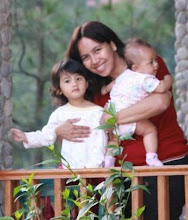Author: Dr. Jennifer Feeny
Copyright (c) 2009 Dr. Jennifer Feeny
As parents, we want what is best for our children. But, babies
do not come with instruction manuals leaving parents with lots
of questions. Often, parents wonder:
Will they just outgrow being pigeon toed? Or flat footed? Most
often, the answer is no.
It is important for parents to pay close attention to their
children's feet from the start. Adult foot pain often has its
origins in childhood. Preventative care can help thwart these
issues. Neglecting foot health invites problems in other parts
of the body such as the knees, legs and back.
Did you know that babies' feet will be almost half their adult
foot size by their first birthday? That's amazing! Problems
noticed at birth will not disappear by themselves. Don't wait
until the child begins walking to address these issues. The
American Podiatric Medical Association recommends the following
tips to help assure that development proceeds normally:
- Be vigilant about inspecting your baby's feet. If you notice
something abnormal, call your doctor. Don't expect issues to go
just go away as they grow, things can get much worse with time.
- Because an infant's feet grow so quickly, it is best to always
keep them loosely covered. Tight fitting materials restrict
movement and may hinder normal development.
- Let your baby exercise their feet and legs by allowing the
feet and legs to be uncovered when a cover is not necessary.
Babies naturally like to kick and squirm which will help them
gain the strength to stand and walk soon.
- Be sure to reposition the baby several times throughout the
day to avoid prolonged strain on the same bones and joints etc.
- Shoes are obviously not a natural part of the human foot and
cause many of the problems found in adult feet. Babies are even
more susceptible to the pitfalls of shoes. Allow your child to
walk barefoot or to wear only socks whenever it is possible to
do so safely. This allows the foot to develop naturally while
strengthening the toes that are built to "grip" surfaces. When
shoes are a must, be sure that they are both light and flexible.
The more natural the materials, the better.
Walking comes natural to humans and it is best to let nature
determine when a baby starts to walk (usually between 10 and 18
months). Forcing the issue before the child is ready can cause
physical and emotional stress for both of you! Give them the
opportunity to walk, and they will take it from there.
Toddlers and school age children should have their feet checked
often by their parents. Millions of children participate in
sports, but foot pain could keep them on the sidelines. Here are
some suggestions to keep your kids footloose and fancy free:
- Have your child's feet measured often as shoe size can
sometimes increase rapidly, even in as little as three months.
- Warm weather invites us all to go barefoot and that's great,
but be cautious and use common sense. Any surface that is
frequented by the bare feet of others can help spread infection
and viruses like plantar warts which infiltrate the body through
small breaks in the skin.
- Don't be fooled if your child does not complain about foot
pain. I have seen children who suffered for months with an
ingrown nail; not telling their parents due to fear of a visit
to the doctor.
- When purchasing shoes, be sure that it has a firm heel counter
(stiff at the back of the shoe) and adequate cushioning of the
insole. There should be a thumbnail's width between the longest
toe and the end of the shoe. The sole (bottom of shoe) should
bend at the ball of the foot but not in the middle of the shoe.
Avoid hand-me-down shoes as they have been shaped and worn to an
individual's unique feet.
- To prevent a painful ingrown toenail, trim toenails straight
across. If the toenail becomes infected (red and swollen) see a
podiatrist right away.
Addressing a "little" foot issue now (pun intended) may help
your child avoid a big problem down the road. Bring your child
to a podiatrist to ensure successful development and optimal
foot health for your child's feet throughout the years.
About the author:
Dr. Jennifer Feeny is a board certified podiatrist practicing in
southwest Virginia. As a concerned mother, she monitors her
son's development and wrote this article to help other parents
learn about their children's feet. To see more of what Dr. Feeny
is saying, visit her blog, http://roanokefoot.blogspot.com/ , or
website, http://www.ShenandoahPodiatry.com
Subscribe to:
Post Comments (Atom)




No comments:
Post a Comment